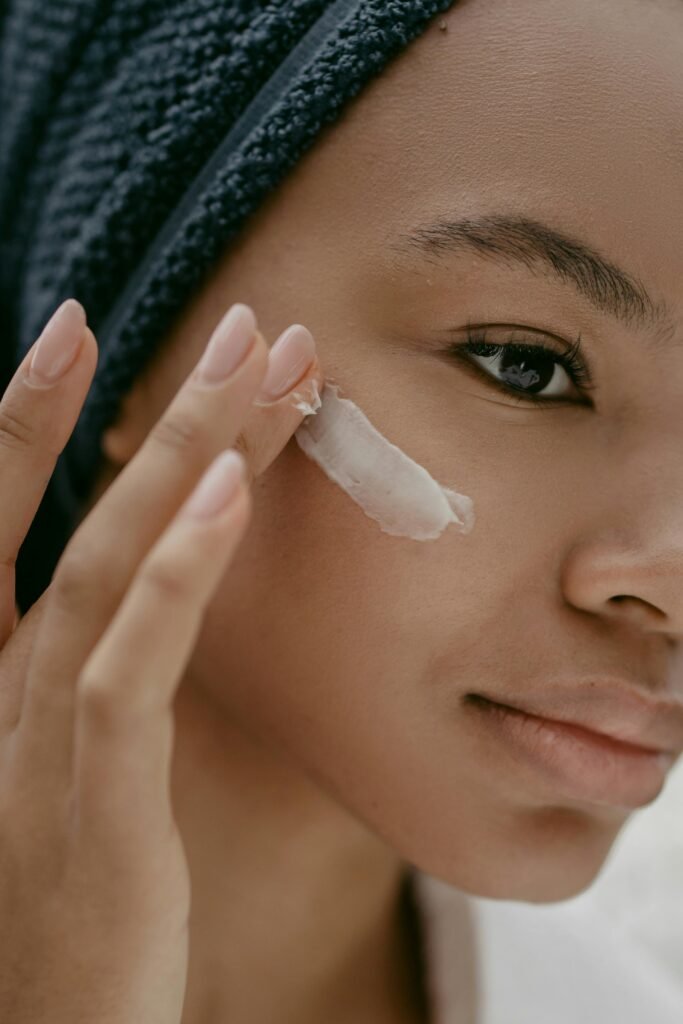
What is Tretinoin?
Tretinoin is a prescription-strength skincare ingredient derived from Vitamin A (also known as a retinoid). It’s commonly used to treat acne, sun damage, uneven texture, hyperpigmentation, and fine wrinkles. It works by speeding up cell turnover — basically telling your skin to refresh itself faster. Over time, this can result in smoother, clearer, and brighter skin.
My Experience Using Tretinoin (2.5 Years In)
After lots of trial and error, I’ve now been using tretinoin consistently for two and a half years. And honestly? It’s one of the best decisions I’ve made for my skin.
But here’s the thing: you have to start slow.
If you’re just beginning, applying it 2–3 times a week is the safest way to introduce it. Everyone’s skin is different, and what works for one person may not work for another. Going slow helps prevent irritation, peeling, and excessive dryness — all very common side effects early on.
Tretinoin Strengths: What I Used & Why I Adjusted
Tretinoin is usually prescribed in different strengths:
- 0.025% (lowest)
- 0.05% (mid-strength)
- 0.1% (strongest)
I started with 0.025% for about six months to help my skin adjust. It felt gentle enough, and I gave my skin time to build up tolerance. After that, I moved to 0.05%, and I’ve stayed there ever since. I did consider 0.1%, but honestly, once you’ve used tretinoin for a full year, stronger isn’t always better. Sometimes maintenance is more important than strength.
Common Side Effects — and How I Handled Them
Let’s be real — tretinoin isn’t always a smooth ride. The first few months can feel like your skin is freaking out. I dealt with:
- Dryness
- Flakiness around my nose and mouth
- Occasional redness
- A temporary “purge” (where acne gets worse before it gets better)
To manage this, I kept my routine extremely simple:
- A gentle, hydrating cleanser
- A barrier-focused moisturizer (look for ceramides or panthenol)
- And lots of sunscreen during the day (SPF is non-negotiable with tretinoin)
How I Apply Tretinoin in My Routine
I usually apply tretinoin at night, after cleansing and either:
- After moisturizer (for more sensitive days)
- Before moisturizer (when my skin feels stronger)
Sometimes I use the “moisture sandwich” method — moisturizer, tretinoin, then another thin layer of moisturizer on top. I also wait 10–15 minutes after washing my face before applying it. This helps reduce stinging and lets your skin fully dry, which minimizes irritation.
Tips for Beginners Starting Tretinoin
- Start slow (2–3 nights a week)
- Less is more — a pea-sized amount is enough for the whole face
- Moisturize generously
- Avoid active ingredients like AHAs/BHAs at the same time (at least at first)
- Stick with it — most benefits show up after 12+ weeks, but they’re worth it!
My Results So Far
After 2.5 years, my skin is smoother, less textured, and breakouts are rare. Fine lines have softened, and my skin looks more even-toned and glowy. Tretinoin isn’t magic overnight — but with consistency, it does feel magical.
Final Thoughts
Tretinoin has been a game-changer for me, but it took patience. If you’re thinking about trying it, don’t rush the process. Focus on supporting your skin barrier, using gentle products, and listening to your skin’s needs.
Call to Action
Have you tried tretinoin, or are you curious about it? I’d love to hear your experience! If you’ve started your own journey or have questions about how to begin, feel free to share in the comments or reach out to me directly.
And don’t forget to explore my other skincare guides to help you make informed, confident choices for your skin
Leave a Reply